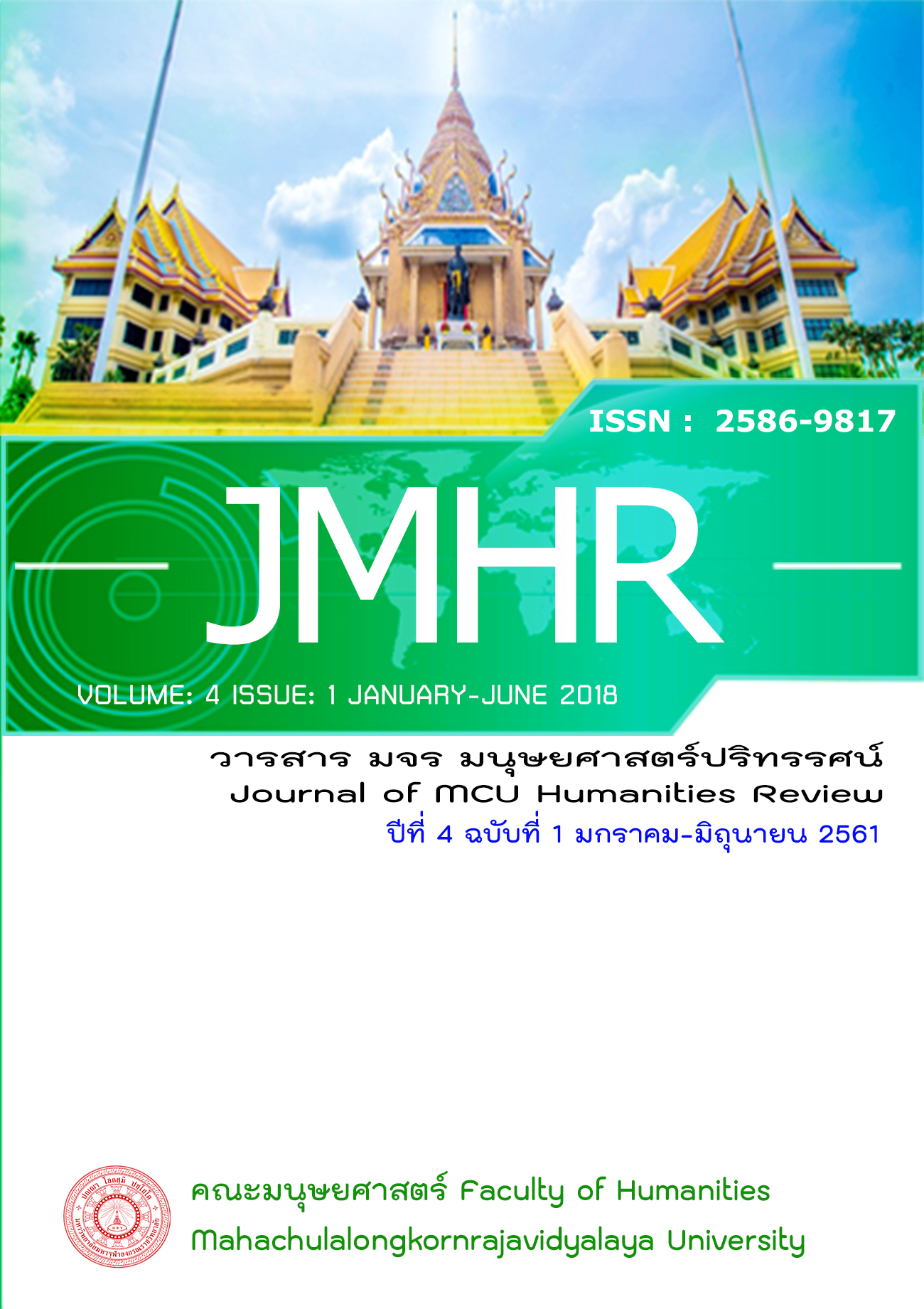บทบาทพระเทพสุธี (สมควร ปิยสีโล) เจ้าคณะภาค 14 เจ้าอาวาสวัดนิมมานรดี กับงานพัฒนาเด็กและเยาวชน
คำสำคัญ:
บทบาท,การพัฒนา,เด็กและเยาวชนบทคัดย่อ
การวิจัยครั้งนี้มีวัตถุประสงค์ 4) เพื่อศึกษาบทบาทของพระเทพสุธี (สมควร ปิยสีโล) เจ้าคณะภาค 14 เจ้าอาวาส วัดนิมมานรดี ในงานพัฒนาเด็กและเยาวชน 2) เพื่อศึกษาผลที่เกิดขึ้นต่อชุมชนวัดนิมมานรดีจากการพัฒนาเด็กและเยาวชนของพระเทพสุธี (สมควร ปิยสีโล) เจ้าคณะภาค 14 เจ้าอาวาสวัดนิมมานรดี การวิจัยครั้งนี้ใช้ระเบียบวิธีวิจัยเชิงคุณภาพ (QualitativeResearch) โดยมีกลุ่มผู้ให้ข้อมูลสำคัญประกอบไปด้วยพระภิกษุวัดนิมมานรดี ผู้บริหาร ครู และนักเรียนโรงเรียนวัดนิมมานรดี ผู้ติดตามใกล้ชิดพระเทพสุธี จำนวน 13 รูป/คน ผู้วิจัยใช้ การสังเกตแบบมีส่วนร่วม การสัมภาษณ์แบบเจาะลึก และการศึกษาจากเอกสาร เครื่องมือที่ใช้ในการวิจัยครั้งนี้ ได้แก่ แบบสัมภาษณ์แบบมีโครงสร้าง แบบสังเกต การวิเคราะห์ข้อมูล การวิเคราะห์เอกสาร การวิเคราะห์แบบอุปนัย และการวิเคราะห์การจำแนกประเภทของข้อมูล ผลการวิจัยพบว่า
1) บทบาทของพระเดชพระคุณพระเทพสุธี (สมควร ปิยสีโล) ได้บริหารจัดการด้านหลักสูตรและการสอนนักธรรมตั้งแต่นักธรรมชั้นตรีไปจนถึงนักธรรมชั้นเอก ผู้ที่สอบไล่ได้นักธรรมชั้นตรี ก็จะให้ศึกษาต่อด้านภาษาบาลีหรือภาษามคธ ซึ่งเป็นภาษาที่จารึกพระธรรมคำสอนของพระสัมมาสัมพุทธเจ้า โดยเปิดทำการสอนตั้งแต่ชั้นบาลีไวยากรณ์ไปจนถึงชั้นประโยค ป.ธ.6 และส่งพระภิกษุสามเณรไปสอนวิชาพระพุทธศาสนาในโรงเรียนต่างๆ และมอบทุนสนับสนุนโรงเรียนเพื่อการจัดการเรียนการสอนธรรมศึกษา ซึ่งเป็นการดำเนินนโยบายในชื่อ “ให้ธรรม ให้ทุน” และจัดกิจกรรมโครงการบรรพชาสามเณรและบวชเนกขัมมจาริณีภาคฤดูร้อน การเข้าค่ายพุทธบุตรเป็นประจำทุกปี
2) ผลที่เกิดขึ้นต่อชุมชน คือ การให้ความช่วยเหลือด้านปัจจัยพื้นฐานของคนในชุมชน ด้วยการให้ทาน เช่น โครงการแจกข้าวสารทุกเดือน โครงการเยี่ยมบ้านพระภิกษุสามเณรวัดนิมมานรดี โดยจัดสรรงบประมาณช่วยเหลือครอบครัว โดยใช้หลักการทำให้คนเกิดศรัทธาและมีความเชื่อมั่นในสิ่งที่หลวงพ่อทำ
ทั้งยังประสานความร่วมมือไปยังชุมชน วัด โรงเรียน และหน่วยงานราชการ หรือ “บวร” ในการพัฒนาชุมชนวัดนิมมานรดี






